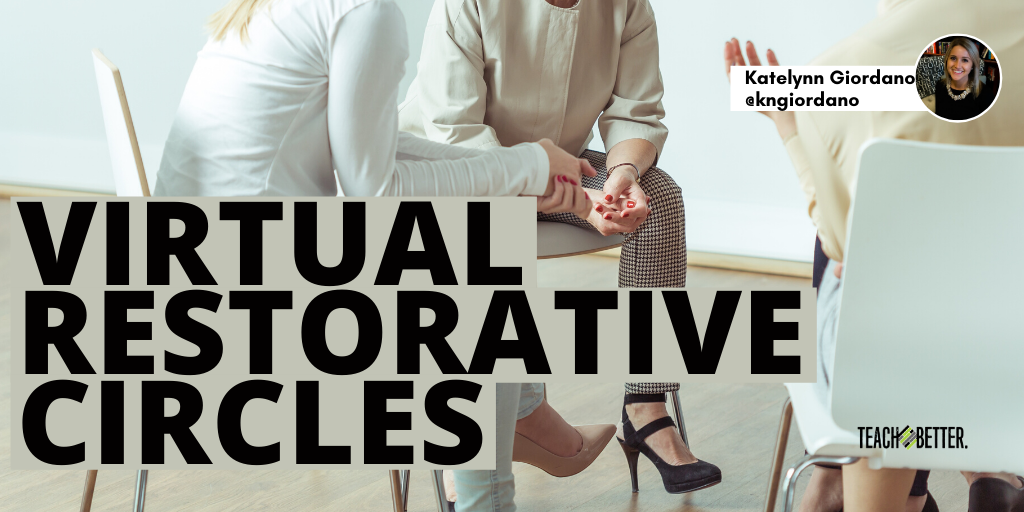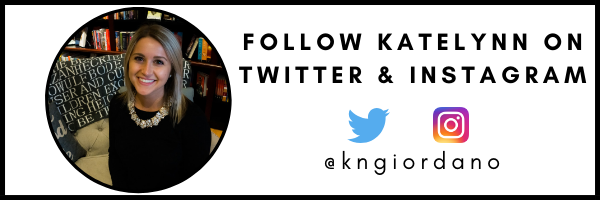TL;DR:
- Restorative circles are personal class discussions.
- Some benefits of restorative circles for your students include building community and creating a sense of acceptance.
- Restorative circles can provide a safe environment for students both in-person and virtually.
I learned of restorative circles at the December 2019 AIMS Network Conference. The session I attended described how these circles transformed classroom culture and created a sense of community among students. After hearing about them, I knew immediately that I wanted to do them with my homeroom class.
When we returned from winter break, we began our restorative circle practice. Every Friday, my homeroom took time out of 8th period. We pushed all the desks and tables to the sides and arranged our chairs in a circle. Each of us shared a high from our week, a low from our week, and our response to a question. Those first few weeks, I came up with the questions. They ranged from light-hearted (like What is your favorite activity outside school?) to more heartfelt (like Who is someone that has changed your life?). After awhile, students came up with the questions themselves.
Restorative Circles in the Classroom
These restorative circles were all that the session promised and more. We created a deep sense of acceptance and shared ourselves openly. Students felt comfortable sharing because our rule was, “What happens in the circle stays in the circle.” And they took that seriously.
In a time when our students' lives have been turned upside down, they need us. They need the stability school provides, the time to see their peers, and a space to share and be heard. Click To TweetAnyone that joined our circle, from myself to other teachers to administrators, could only join if they opened up, too. Each time, the love was palpable and vibrant. I know the kids felt it too, because Circle Time Fridays quickly became their favorite part of the week.
And then COVID hit and we were no longer together. But, in a time when we needed our community more than ever, I was not ready to give up our Friday Circle Time. So we found a way to adjust.
Taking Restorative Circles Virtual
Video chatting has been our normal for awhile now. But at the beginning, it was full of awkward silences, frozen screens, and spotty internet connections. I worried that our Circle Time wasn’t powerful enough to bridge that gap.
I was wrong.
The moment I sent out a survey to my classes, the response was awesome. I included more than just my homeroom students this time, mainly because I thought it might help the rest of my sixth graders to be a part of this community. Their replies warmed my heart.
Not only did they respond with which times they were available, they commented about their excitement. They shared how much they missed it, and asked what the question would be.
The consensus of the survey determined our time because I wanted to make sure most kids could attend. I sent out the questions ahead of time so they were prepared. Since our school used Google Hangouts, I sent instructions to download the Grid View extension, so they could all see each other at once.
[scroll down to keep reading]Restorative Circles to Provide Stability
That first Friday was a beautiful thing. There were a few glitches, but overall the kids did a fantastic job. Everyone muted themselves to begin while I reviewed the “rules” and our structure. Then we shared one at a time. And while it wasn’t the same as being in person, it gave us a little taste of the community we had before.
In a time when our students’ lives have been turned upside down, they need us. They need the stability school provides, the time to see their peers, and a space to share and be heard. Restorative circles, though not as powerful in a virtual setting, provide that place for them.
And of all the things I adjusted, implemented, and recorded, this was by far the most beneficial for my students and the simplest one to organize.
About Katelynn Giordano
Katelynn Giordano is a Middle Level Language Arts Educator in Illinois and Training & Development Specialist for the Teach Better Team. She writes on her blog, Curriculum Coffee, and for the Teachers on Fire magazine.
In 2019, Katelynn presented information on action research in the classroom with a team at the National Council of Teachers of English Convention in Baltimore.
Katelynn is a dynamic educator who is passionate about student voice and empowerment, promoting equity, and valuing teachers as professionals.
Katelynn is also a member of the Teach Better Speakers Network.




